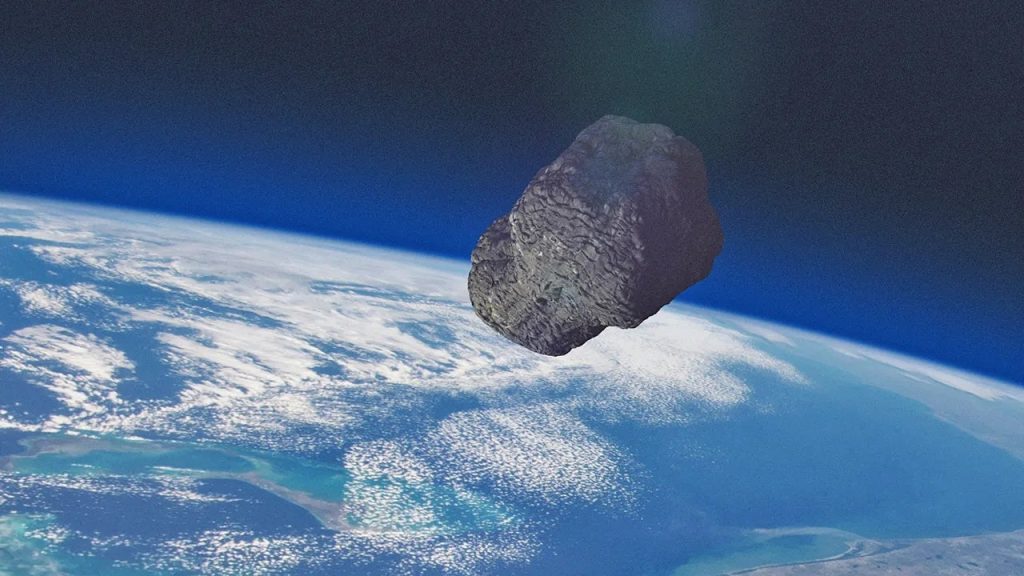Asteroid 2025 FA22: Earth’s Close Encounter with a Skyscraper-Sized Space Rock
In the early hours of September 18, our planet will experience a cosmic near-miss as asteroid 2025 FA22 races past Earth at over 24,000 mph. This massive space rock, measuring between 427 and 951 feet across—comparable to a New York skyscraper—has caught the attention of astronomers worldwide. While NASA and the European Space Agency (ESA) have confirmed that the asteroid poses no immediate threat to our planet, the close approach offers scientists a rare opportunity to study such a substantial celestial object up close. The asteroid’s trajectory has been carefully mapped, with future passes predicted for 2089 and 2173, giving us multiple chances to learn from this cosmic visitor.
The discovery of 2025 FA22 occurred in March when astronomers spotted it using a specialized telescope in Hawaii. Given its impressive size and velocity, the asteroid was initially added to ESA’s watch list of potentially dangerous asteroids. After further observation and refined calculations, scientists have confidently removed it from the risk table, assuring the public that no collision will occur during this week’s flyby. Nevertheless, the ESA researchers emphasize the seriousness with which they treat such objects, noting that “impacts on this scale are rare, but the consequences would be catastrophic.” Indeed, if an asteroid of this magnitude were to strike Earth, it could devastate a major city, trigger widespread fires, and potentially cause tsunamis in coastal regions.
For space enthusiasts hoping to catch a glimpse of 2025 FA22, disappointment awaits—the asteroid won’t be visible to the naked eye as it passes by our planet. However, dedicated astronomers equipped with powerful telescopes or binoculars might be able to spot it appearing as a faint dot against the backdrop of stars at approximately 3:40 a.m. Eastern Time on September 18. This fleeting moment will represent the closest approach of the asteroid before it continues its journey through our solar system. While most of us will sleep through this cosmic event, scientists around the world will be monitoring closely, collecting valuable data that helps expand our understanding of near-Earth objects.
Asteroids like 2025 FA22 are fascinating remnants from the formation of our solar system billions of years ago. These rocky formations continue to orbit the sun in various paths, ranging dramatically in size from tiny pebbles to massive space rocks several miles across. According to NASA estimates, our solar system contains more than 1.3 million asteroids, with over 30,000 classified specifically as near-Earth objects—meaning their orbits bring them within relatively close proximity to our planet. Understanding these ancient space travelers provides scientists with crucial insights into the early formation of our solar system and potentially the origins of life on Earth.
NASA’s Asteroid Watch program continuously monitors space rocks that could come within 4.6 million miles of Earth—a distance that might seem vast by terrestrial standards but represents a cosmically small margin in astronomical terms. Any object larger than 492 feet that passes within this distance earns the somewhat alarming designation of “potentially hazardous.” This classification doesn’t necessarily mean the object will impact Earth, but rather that it warrants careful tracking and analysis due to its size and proximity. Asteroid 2025 FA22 certainly meets these criteria, explaining why it has received such attention from the scientific community despite posing no immediate danger.
The study of near-Earth asteroids serves multiple crucial purposes beyond mere scientific curiosity. By tracking these objects, scientists develop better models for predicting future asteroid paths, potentially providing early warnings should a genuinely threatening object be discovered. Additionally, asteroids represent potential resources for future space exploration and could even become targets for mining operations as humanity extends its reach beyond Earth. While asteroid 2025 FA22’s upcoming flyby might seem like just another cosmic event, it represents an important opportunity for astronomers to refine their understanding of these ancient solar system inhabitants. As we continue to look skyward with increasingly sophisticated tools, each close approach helps build our knowledge of the space environment surrounding our planetary home and prepares us for potential future challenges from the depths of space.


